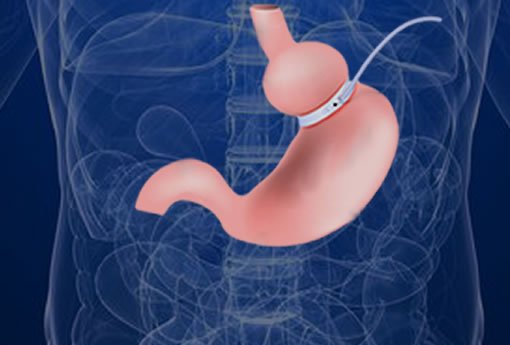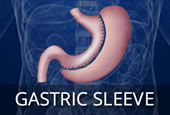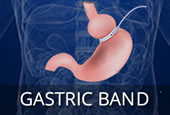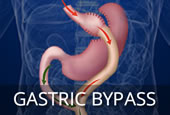Laparoscopic Adjustable Gastric Banding
Laparoscopic Adjustable Gastric Banding involves inserting a specially made band around the top of the stomach. This is done with a keyhole technique so recovery is quick. During the course of the surgery, no organs are cut, removed or rearranged, hence the procedure is completely reversible.
The section of stomach sitting above the band (pouch) can only hold a small amount of food. It is also this part of the stomach that generates the sensation of feeling full (satiety). As a small amount of food is eaten, it fills the pouch and a sensation of fullness is felt and hunger is reduced. The food then slowly passes through the band into the rest of the stomach and is digested in the normal way.
Gastric Banding Keys to Success
The key to success with Laparoscopic Adjustable Gastric Banding is to be consistent in eating good, healthy nutritious solid food. You have to learn to eat slowly and chew very well.
It is important to avoid the temptation to eat soft or liquid type foods. These pass through the Laparoscopic Adjustable Gastric Banding rapidly, do not create a sense of fullness, so food consumption remains high and weight is not lost effectively.
It is important to understand that liquids are not restricted by the band so only low calorie drinks should be consumed. Beware that foods such as chocolate and ice cream are effectively high calorie liquids which the band simply will not stop.

Gastric Banding Adjustments
The band has an inflatable balloon along its inner border. This can be expanded with saline injected though an access port sitting beneath the skin. As the band is inflated, it gets tighter, giving greater restriction to food passage and increased satiety.
Clearly if the band is too tight, food may not pass and regurgitation results. If the band is too loose, no restriction is experienced and so no reduction in eating occurs. The aim of band adjustment is to have the band at the right level of tightness so that regurgitation is minimised but portion control is achieved.
Advantages of Gastric Banding
- Limits the amount of food that is eaten at a meal with a feeling of fullness and reduction in hunger
- The surgery is reversible
- No part of the stomach is stapled, cut or removed – your normal anatomy has not been altered and food is absorbed by your body exactly as it was before surgery
- Usually only involves an overnight stay and rapid recovery
- Good weight loss (about 50% of excess weight)
- Extremely low risk of operative complications
Disadvantages of Gastric Banding
- Demonstrable commitment to weight loss required is the highest with this procedure i.e. strictest compliance with diet and lifestyle modification
- Requires lifelong follow up and regular attendance at Darebin Weight Los Surgery
- A small proportion of patients will need revisional surgery for complications such as band slippage 2-3%, erosion <1% and port related complications (overall around 10%)
Risks of Gastric Banding
The most concerning operative complication in this surgery is perforation of the stomach, though it is very uncommon. Infection is also important since if the band were to be infected, it would need to be removed. Happily this too is a very unusual event. In essence, the complication rate is very low – less than 0.5%
There are some specific complications peculiar to the band – erosion, slippage, port infection and device failure such as tubing fracture. These are uncommon but may require repeat surgery. Risks will be discussed in more detail with your surgeon.
Dietetic requirements of Gastric Banding
Dietetic requirements of Laparoscopic Adjustable Gastric Banding
- In general, you will be advised by your surgeon to have a very low calorie diet (VLCD) e.g. Optifast for 10-14 days prior to surgery
- A healthy, balanced eating plan is recommended with focus on portion control
- We recommend nutritional supplementation of vitamins and minerals such as Iron, Folate, Calcium and Vitamin D with a daily multivitamin to prevent deficiencies
- At least 6-12 monthly review of nutritional adequacy (including annual blood tests) to ensure maintenance of adequate nutritional health
- To prevent food intolerances, we reinforce positive eating behaviour guidelines. ‘How’ you eat, can have a major impact on your weight loss and enjoyment of food

Locations of Darebin Weight Loss Surgery
Key Consulting Locations
Suite 3, 195 Thompsons Road
Bulleen Vic 3105
Key Operating Locations
The Austin Hospital
Warringal Private Hospital
Epworth Richmond
Hospital
Latrobe Private
Northern Private.












